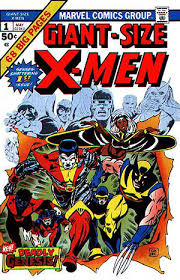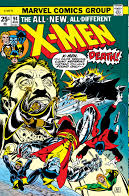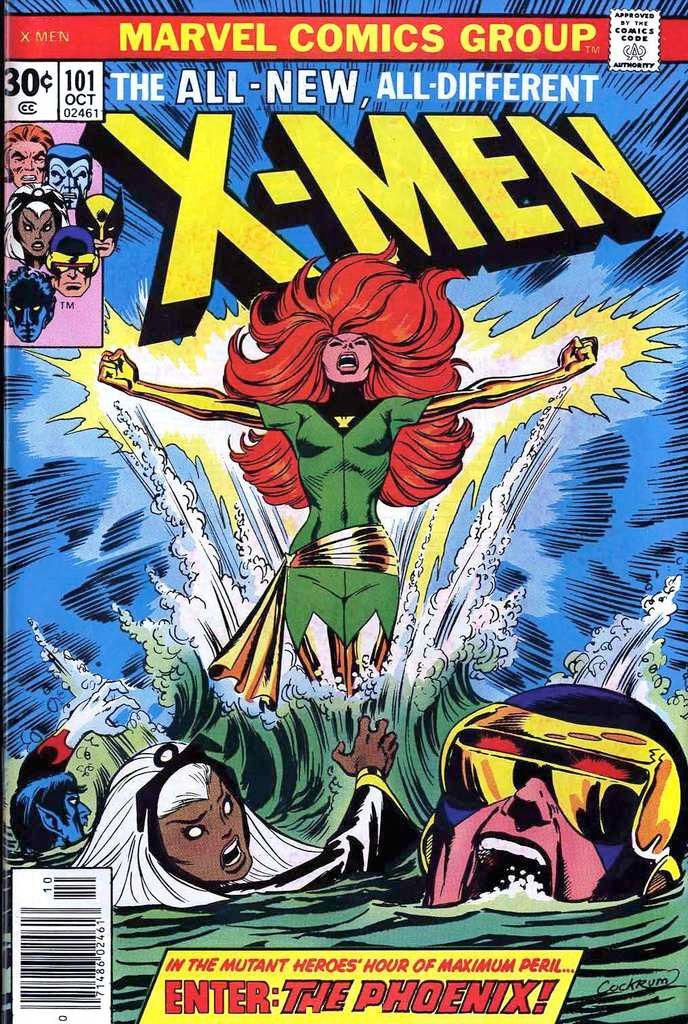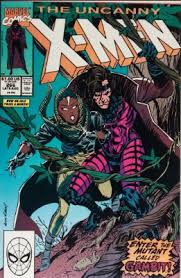Set Description:
X-Men 1963 1 Thru 300
|

“Out of the ash I rise with my red hair and I eat men like air.” ~ Sylvia Plath
The original X-Men
In the early 1960s, Marvel Comics editor/writer Stan Lee, artist Jack Kirby and several other illustrators produced a number of superhero titles which stressed character personalities and personal conflict as much as action and adventure, including The Fantastic Four, The Incredible Hulk and Spider-Man. The X-Men was one of the last titles of this Silver Age renaissance, appearing in September 1963.
In the comic book series, the X-Men were founded by the paraplegic telepath Charles Xavier, also known as Professor X. Xavier gathered the X-Men under the cover of a "X-Mansion" at a large country estate at 1407 Graymalkin Lane in Salem Center, a city in Westchester County, New York.
Cover-billed as "the strangest heroes of all", the original X-Men consisted of five teenagers still learning to control their powers:
Cyclops (Scott Summers), whose eyes constantly gave off heatless blasts of concussive force that could only be controlled by a "ruby quartz" visor. He would become the X-Men's field leader.
Marvel Girl (Jean Grey, later known as Phoenix), a telekinetic, who would later also be revealed as a telepath
Angel (Warren Worthington III, later known as Archangel), who took his name from the large, angel-like feathered wings which sprouted from his back at puberty and allowed him to fly. These wings would later be amputated and replaced with metal wings, but these later molted to reveal his feathered wings regrown.
Beast (Hank McCoy), a genius who originally possessed a human appearance with enlarged hands and feet, and enhanced agility, and later became a blue ape-like creature, and more recently a cat-like creature.
Iceman (Bobby Drake), who could lower temperatures, condensing ice from thin air, and transform into an ice form, and has recently learned how to rebuild his ice body from damage.
A precursor to the concept of a school for feared genetic mutants appeared in the 1953 science fiction novel Children of the Atom by Wilmar H. Shiras, which has been credited — though never officially confirmed — with inspiring the X-Men. The title characters of the novel were also mutants, the results of an unintended experiment in genetic mutation. The term "Children of the Atom" has also been used at times during the X-Men franchise's history, often as a subtitle for various X-Men publications and video games.
Despite the philosophical concepts which appeared in The X-Men, Lee has said he invented genetic "mutants" to find a way to create a number of super-powered characters without having to come up with a separate and interesting origin for each one.
X-Men #1 also introduced the team's arch-nemesis, Magneto, who controlled magnetism and who felt that mutants should rule over or kill all normal humans. Magneto's character would later be fleshed out to reveal that he once shared a friendship with Professor X, and that his decree that mutants must conquer or be conquered grew from his experiences as a Holocaust survivor. The X-Men #4 introduced Magneto's team, the Brotherhood of Evil Mutants, including Mastermind, the Toad, Quicksilver and the Scarlet Witch. Other villain were also introduced during this era who would loosely become affiliated with the Brotherhood over time, including Unus the Untouchable, the Vanisher and the Blob, the latter having the most longevity with the group, joining or aiding nearly every incarnation.
While a few other important villains debuted during the 1960s — such as Professor X's superhumanly strong stepbrother the Juggernaut and the mutant-hunting robot Sentinels — the X-Men often fought easily-forgotten mutant criminals, alien invaders and brutish monsters. As a result, this era is largely regarded as unremarkable and The X-Men became one of the less successful Marvel series during the 1960s.
During this early era, only one other member was briefly added to the team:
Mimic (Calvin Rankin), who could use the powers of others, including the other X-Men. He is notable for not only having blackmailed himself onto the team, but also being the only member expelled by Xavier. Whether or not he is truly a mutant is heavily debated.
Lee and Kirby departed the series in 1966, handing the reins over to Roy Thomas and Werner Roth. Roth gave up the regular art chores in 1967, and Thomas dropped the scripting slot in 1968. The title went with no long-term creative time for about a year, but had a couple notable artists. Jim Steranko drew several issues, one added the villain Mesmero to the cast, and Barry Windsor-Smith drew three issues. In 1969, Thomas returned, joined by fan favorite artist Neal Adams in an effort to save the series from its sagging sales. These issues are more highly regarded by fans and introduced recurring villains Sauron and the Living Monolith, as well as two more X-Men:
Lorna Dane (later Polaris), a green-haired mutant with similar powers to Magneto; and
Havok (Alex Summers), Cyclops' rebellious brother who could absorb cosmic energy and use it to disintegrate objects or create energy bursts (like his brother, he had great difficulty controlling his destructive powers).
Though sales did improve while Adams illustrated the book, it was too little and too late, and Marvel stopped producing new issues of The X-Men in 1969 (Issue #66 March 1970 to be exact). The series continued by reprinting old issues and the X-Men appeared in other Marvel comics -- including prominent appearances in Marvel Team-Up, The Avengers, The Incredible Hulk and Captain America -- but faded to near-obscurity.
[source: marvel.wiki.com]
I used to love reading comics as a kid enjoying many of the Donald Duck, Uncle Scrooge and Richie Rich variety, but it wasn't til I was in college that I first became interested in superhero comics. At the time I was an avid baseball card collector, acquiring many 1950s Topps cards with stars such as Mantle and Mays. When I finally read a superhero comic, it was Wolverine...what a great story, I was hooked. I amassed a rather large collection at the time, delving into other titles like Harbinger and X-O Manowar until the comic industry began to saturate the market with too many variants and I eventually lost interest. Flash forward to 2015..... I ended up buying a Wolverine 1988 series issue #1 graded CGC 9.8. I hadn’t really thought about it much up to that point, but the collecting bug was rekindled. I dug out my collection that had been stored away and decided to start submitting my back issues. I looked online to fill gaps in my various collections and thousands of dollars later I’ve acquired quite a few comics and am trying to avoid collecting too many series at a time! My favorites at this point are the Wolverine 1988 series, Alias 2005 and Harbinger’s 1992 series. I have collected a few odds and ends in between and will eventually fill out my Rai 1992, Shadowman 1992, Psylocke Mini Series 2010 and the various X-23 and NYX series and will consider other series once I have the bulk of these filled up. I also like to collect covers I find appealing (see Incredible Hulk 340) and 1st appearances here and there. It’s all a labor of love! |
 |  |  |  |  | | X-Men #1 | Giant Size X-Men #1 | X-Men #94 | X-Men #101 | X-Men #266 |
| |